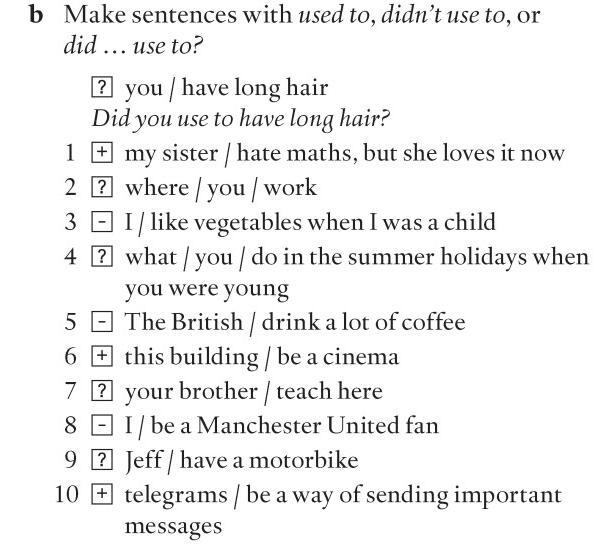Предмет: Английский язык,
автор: HappyAlishok
Помогите с английским 30 баллов!
Make sentences with used to, didnt use to, or did...use to?
Приложения:

Ответы
Автор ответа:
0
1. My sister used to hate Maths but she loves it now.
2. Where did you use to work?
3. I didn't use to like vegetables when I was a child.
4. What did you use to do in the summer holidays when you were young?
5.The British didn't use to drink a lot of coffee.
6. This building used to be a cinema.
7. Did your brother use to teach here?
8. I didn't use to be a Manchester United fan.
9. Did Jeff use to have a motorbike?
10. Telegrams used to be a way of sending important messages.
Похожие вопросы
Предмет: Українська мова,
автор: АлисаЯ
Предмет: Английский язык,
автор: nigakotik
Предмет: Русский язык,
автор: pologutkinakat
Предмет: Математика,
автор: mmmjhiiij
Предмет: Литература,
автор: Kravtsovaanastasia